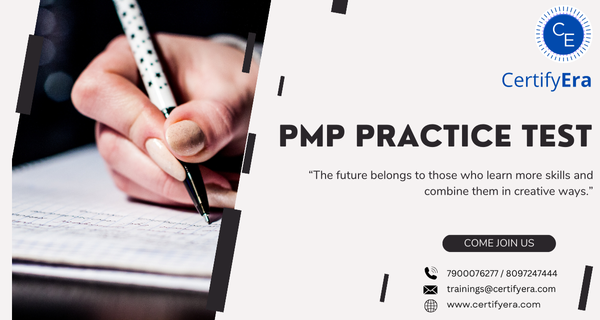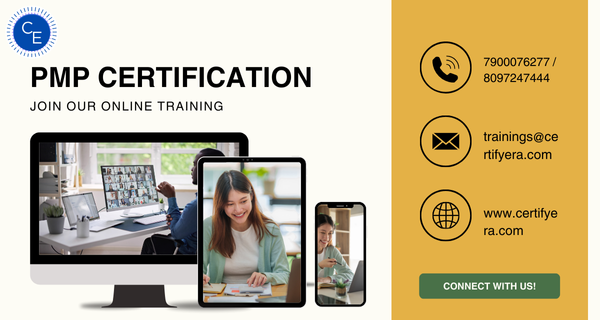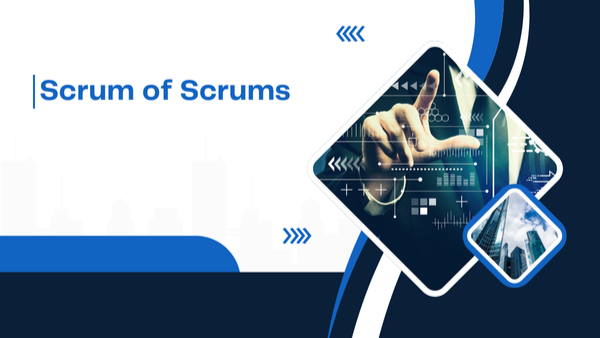
Agile Questions in PMP Exam | PMP Practice Tests
Since Jan-2021, the PMP (Project Management Professional) Exam format and PMP syllabus has changed and PMI has introduced new question types too. As per the latest PMP Exam format, a PMP aspirant has to understand various approaches to Project Management.
Table of Contents
- Agile question in pmp no. 1:
- Agile question in pmp no. 2:
- Agile question in pmp no. 3:
- Agile question in pmp no. 4:
- Agile question in pmp no. 5:
- Agile question in pmp no. 6:
- Agile question in pmp no. 7:
- Agile question in pmp no. 8:
- Agile question in pmp no. 9:
- Agile question in pmp no. 10:
- Agile question in pmp no. 11:
- Agile question in pmp no. 12:
- Agile question in pmp no. 13:
- Agile question in pmp no. 14:
- Agile question in pmp no. 15:
- Agile question in pmp no. 16:
- Agile question in pmp no. 17:
- Agile question in pmp no. 18:
- Agile question in pmp no. 19:
- Agile question in pmp no. 20:
The PMP Aspirants need to know the traditional project management approach, Iterative approach, Incremental approach, Adaptive approach and Hybrid approaches.
As per the new format of PMP exam, 50% of the questions will be expected from traditional approach and rest of the 50% of the questions from Agile and Hybrid approaches.
The latest format of the PMP exam suggests to consider various approaches while making the decision about development approach for a project as part of tailoring process or while initiating the project.
Here, we are going to run through few of the sample Agile questions for PMP Certification Exam preparation. These questions will provide an insight on what kind of project scenarios may be expected in Agile questions in PMP Exam.
You may watch the below given video to understand how to recognize if the given PMP question is Agile question, so that you will be able to make the right decision once the project scenario is understood. Sometimes, people struggle to understand whether the given project scenario is traditional scenario or Agile scenario. You may watch this video to have more clarity and to get yourself acquainted with few of the Agile terminologies.
Agile Question in PMP No. 1:
The self-managing team has been working to understand the features to be built and delivered to the customer. The Agile project manager is helping the team remove impediments while they are working to deliver value. How do they deliver value to customer?
A. Build all the features and deliver at the end of the project
B. Work to build and deliver as soon as possible even if they are half-built
C. Work to build and deliver value to customer at the end of the program to mark completion of a release milestone
D. Build and deliver features incrementally by prioritizing based on value
Answer: D
Explanation: In Agile projects, the primary objective is to prioritize the features based on value and deliver high-value features early in the project life cycle. The team plans to deliver complete user stories which are build completely and delivered. The half-done user stories do not add any value , so not delivered. Delivering the complete product at the end of the project is the characteristic of waterfall project. Delivering the whole product at the end of the program could be a program objective but not the right practice in Agile projects. Join our PMP Self-paced course to learn Agile concepts at your convenience.
Agile Question in PMP No. 2:
While the team was working on an innovative product for pharmaceutical organization, the stakeholders kept on sharing more and more change requests in the last several sprints which has added to the product backlog list of items while decision makers are not ready to extend the timeline and asking the team to deliver everything within the committed timelines. What should the team do?
A. The team should ask to terminate the project as it is not achievable in the given time constraints
B. The team should continue to insist for extending timelines
C. The team should make the stakeholders understand the importance of prioritization and look to get high-value items first
D. The team should promise the decision-makers that if time permits they will deliver all features in the time available
Answer: C
Explanation: Asking the project to be terminated is not practical for the reason that the scope has increased. The best choice is to plan to prioritize and deliver high-value features first to the customer, so even if the low-value items are not done within timelines, it might not impact the business. Insisting on extending timelines or promising the stakeholders for delivering all features if time permits might not help the team to focus on high -value items delivering high business value.
You may get many such practice questions as part of PMP practice tests. To get access to PMP practice tests, follow the below link and practice with the latest format PMP mock questions as per the latest PMP exam format and content recommended by PMI.
Agile Question in PMP No. 3:
You are leading the newly formed project team working on a complex product development. The team has started working in Agile manner and implementing several Agile core practices to deliver value to the customer early and continuously. Which of the following is NOT an Agile Core practice?
A. Retrospecting at the end of each sprint to review lessons learnt
B. Demonstrating the product at the end of each sprint
C. Project manager creating the task list and assigning the work to the team as part of daily-stand-up
D. Sprint planning at the start of each Iteration
Answer: C
Explanation: Sprint planning, Daily stand-up, Sprint review are the events enabling collaborating work environment promoting communication, transparency between the team members which are the core practices of Agile. Project manager creating the task list and assigning work to the team is not the practice in Agile but it is a practice followed in waterfall projects.
You may get many such practice questions as part of PMP practice tests. To get access to PMP practice tests, follow the below link and practice with the latest format PMP mock questions as per the latest PMP exam format and content recommended by PMI.
Agile Question in PMP No. 4:
The team is planning the sprint and selecting the user stories from the product backlog to create sprint backlog and define the sprint goal. The team is not sure on which user stories to select. Who can help in this event?
A. Scrum Master should guide the team by prioritizing the user stories
B. Product Owner should guide the team by prioritizing the user stories
C.The developers should prioritize the user stories themselves based on whichever user stories they think are doable at the moment
D. Project sponsor should prioritize the user stories as he is providing finance
Answer: B
Explanation: The accountability lies with product owner who is business-savvy and knows the product and understand the business value. Product Owner should prioritize and guide the team on the priority of the user stories. Scrum Master is a servant leader removing impediments and enabling the team to perform and coach the team on Scrum practices. The developers might not be able to understand the high-value items from business perspective. The project sponsor may share inputs from business side but ultimate role to prioritize is product owner.
You may get many such practice questions as part of PMP practice tests. To get access to PMP practice tests, follow the below link and practice with the latest format PMP mock questions as per the latest PMP exam format and content recommended by PMI.
Agile Question in PMP No. 5:
The project stakeholders are tailoring the project to decide the development approach and the project life cycle for the project. Their discussions are heading towards choosing the incremental approach. Which of the following characteristics define incremental approach?
A. Baselining the requirements and working to develop the product
B. Frequent delivery of smaller increments, dynamic requirements, performed once for a given increment
C. Frequent changing requirements, repeated until correct making one single release at the end
D. Working with fixed scope to develop the product and deliver at the end of the project
Answer: B
Explanation: As mentioned in Agile practice guide the nuances between iterative, incremental approaches, In Iterative, the requirements are dynamic and the team will work on few prototypes at the start to understand the product and refine the product throughout the project life cycle and make one single delivery at the end. In traditional, the scope is baselined or fixed and the team would work to achieve the baselined scope and deliver the product.
You may get many such practice questions as part of PMP practice tests. To get access to PMP practice tests, follow the below link and practice with the latest format PMP mock questions as per the latest PMP exam format and content recommended by PMI.
Agile Question in PMP No. 6:
You are leading an Agile project and the team encounters unexpected technical difficulties during a sprint. What should be your immediate course of action?
A. Extend the sprint duration to accommodate the delay
B. Escalate the issue to senior management
C. Convene a team meeting to discuss and address the issue
D. Continue working and adjust the sprint scope in the next sprint planning meeting
Answer: C
Explanation: In Agile, it is important to address issues as soon as they arise. Convening a team meeting allows for immediate discussion and resolution of the problem, promoting transparency and collaboration.
Agile Question in PMP No. 7:
In an Agile project, the customer frequently changes their requirements. As a project manager, how would you ensure that these changes are managed effectively?
A. Freeze the scope after each sprint
B. Use change control boards to approve changes
C. Incorporate changes during the iteration review meetings
D. Update the product backlog to reflect new requirements
Answer: D
Explanation: Agile projects are designed to accommodate changing requirements. Updating the product backlog ensures that new requirements are prioritized and planned for in future sprints.
Agile Question in PMP No. 8:
During a sprint planning meeting, the team realizes that they have overestimated their capacity and may not complete all the planned work. What should the Scrum Master do?
A. Remove some user stories from the sprint backlog
B. Ask the team to work overtime to meet the sprint goal
C. Extend the sprint duration
D. Encourage the team to focus on the highest priority items
Answer: D
Explanation: The Scrum framework emphasizes delivering the most valuable features first. Focusing on the highest priority items ensures that the most important work is completed within the sprint.
Agile Question in PMP No. 9:
In a given project, the team is following adaptive approach and defining the responsibilities for a product owner role. Which of the following are responsibilities of the Product Owner in a Scrum project? (Select two)
A. Facilitating Scrum ceremonies
B. Prioritizing the product backlog
C. Ensuring the team follows Scrum practices
D. Defining user stories and acceptance criteria
Answer: B, D
Explanation: The Product Owner is responsible for managing the product backlog, including prioritizing items and defining user stories and acceptance criteria. Facilitating Scrum ceremonies and ensuring adherence to Scrum practices are typically the Scrum Master's responsibilities.
Agile Question in PMP No. 10:
In order to continuously improve the project performance, you are implementing Kanban for your team enabling you to gain various benefits in managing the project work. The team wants to know how they will measure progress. What should you emphasize?
A. The number of tasks completed in each sprint
B. The cumulative flow diagram and lead time
C. The sprint burndown chart
D. The velocity of the team
Answer: B
Explanation: In Kanban, progress is measured using tools like the cumulative flow diagram and lead time. These metrics help visualize work in progress and identify bottlenecks.
 Agile Question in PMP No. 11:
Agile Question in PMP No. 11:
A project team is using Agile framework for identifying the bottlenecks proactively and working to fix these bottlenecks to improve the performance. In a Kanban system, the team notices a bottleneck in the review process. What is the best way to address this issue?
A. Increase the work-in-progress limits
B. Add more resources to the review process
C. Prioritize work that can be reviewed quickly
D. Reduce the workload in other stages to focus on the bottleneck
Answer: D
Explanation: Reducing the workload in other stages allows the team to focus on the bottleneck, improving flow and throughput. Adding resources may not be immediately feasible, and increasing WIP limits can exacerbate the problem.
Agile Question in PMP No. 12:
Your team is practicing XP, and a customer requests a significant change mid-iteration. The change is complex and will require extensive code modification. What should you do?
A. Reject the change and stick to the iteration plan.
B. Incorporate the change immediately, regardless of its impact.
C. Evaluate the change and its impact on the current iteration.
D. Postpone the change to the next iteration.
Answer: C
Explanation: XP encourages responsiveness to customer needs but also emphasizes sustainable pace and realistic planning. Evaluating the change allows the team to make an informed decision about its feasibility within the current iteration.
Agile Question in PMP No. 13:
In a SAFe implementation, how can teams ensure continuous alignment and synchronization throughout the Program Increment?
A. By holding a daily stand-up meeting for all teams.
B. By regularly updating a shared project management tool.
C. By conducting regular ART Sync meetings.
D. By having the Product Owner review all work items daily.
Answer: C
Explanation: Regular ART Sync meetings ensure continuous alignment and synchronization across all teams within the Agile Release Train, allowing for timely identification and resolution of issues.
Agile Question in PMP No. 14:
Your team is applying Lean principles and notices that some processes have significant waste. What is the first step to address this issue?
A. Implement automation to speed up the process.
B. Eliminate the identified waste immediately.
C. Map the current process to identify all sources of waste.
D. Increase the team's workload to improve efficiency.
Answer: C
Explanation: Lean principles emphasize understanding the process thoroughly before making changes. Mapping the process helps identify all sources of waste, allowing for more effective elimination.
Agile Question in PMP No. 15:
In a Lean project, the team is focused on delivering maximum value to the customer. They identify several tasks that do not add value. What should they do with these tasks?
A. Complete the tasks as quickly as possible to move on.
B. Eliminate or reduce these tasks.
C. Outsource these tasks to another team.
D. Document the tasks for future reference.
Answer: B
Explanation: Lean principles advocate for the elimination or reduction of tasks that do not add value, focusing on streamlining processes to deliver maximum value to the customer.
Agile Question in PMP No. 16:
You are managing a project using a Hybrid approach. The development team uses Scrum, while the marketing team follows a traditional approach. How can you ensure effective collaboration between these teams?
A. Create separate project plans for each team.
B. Implement a unified communication platform.
C. Use a single project management methodology for both teams.
D. Conduct daily stand-up meetings with both teams.
Answer: B
Explanation: A unified communication platform ensures that both teams can share information and collaborate effectively, despite using different methodologies.
Agile Question in PMP No. 17:
In a hybrid project, what is the best way to handle conflicting priorities between Agile and traditional teams?
A. Allow each team to prioritize their work independently.
B. Establish a cross-functional steering committee to resolve conflicts.
C. Follow the priorities of the traditional team.
D. Follow the priorities of the Agile team.
Answer: B
Explanation: A cross-functional steering committee can provide balanced decision-making and ensure that both Agile and traditional priorities are considered and aligned with overall project goals.
Agile Question in PMP No. 18:
You are working on a large project using SAFe. What is the role of the Release Train Engineer (RTE)?
A. To prioritize the product backlog.
B. To facilitate Agile Release Train (ART) events and processes.
C. To develop the architectural runway.
D. To approve changes to the project scope.
Answer: B
Explanation: The Release Train Engineer (RTE) facilitates ART events and processes, ensuring that the Agile Release Train operates smoothly and efficiently.
Agile Question in PMP No. 19:
In your organization, you are implementing large scaled Agile framework. In SAFe, what is the purpose of the Program Increment (PI) Planning event?
A. To develop detailed project schedules.
B. To align teams to a common mission and vision.
C. To review and accept completed work.
D. To assign tasks to individual team members.
Answer: B Explanation: PI Planning aligns all teams within the ART to a common mission and vision, ensuring cohesive and coordinated efforts towards shared objectives.
Agile Question in PMP No. 20:
In your software development project, your team has been facing numerous defects in the code. Which practice should you emphasize to reduce these defects?
A. Continuous Integration
B. Pair Programming
C. Refactoring
D. Test-Driven Development (TDD)
Answer: D
Explanation: Test-Driven Development (TDD) involves writing tests before code, ensuring that code meets the desired specifications and reducing defects through continuous feedback.

About Anita Ankam
Anita Ankam – Expert Project Management Instructor
Anita Ankam is a highly experienced and certified project management instructor, specializing in globally recognized methodologies such as PMP®, PMI-ACP®, DASM®, and DASSM®. With an extensive academic background, including an MBA and MSc, Anita holds multiple industry-leading certifications, including PRINCE2, PRINCE2 Agile Practitioner, CSM, ASM, ITIL, and Six Sigma Black Belt.
As an authorized training instructor, Anita has guided countless professionals in mastering project management frameworks and agile practices. Know more.
Related Posts

Featured Links
Contact us
- PMP® Certification Course |
- CAPM Certification Course |
- PMP Certification Training in Mumbai |
- PMP Certification Training in Pune |
- PMP Certification Training in Hyderabad |
- PMP Certification Training in Delhi |
- PMP Certification Training in Chennai |
- PMP Certification Training Course in Ahmedabad |
- PMP Certification Training Course in Bangalore |
- PMP Certification Training Course in Bhubaneswar |
- PMP Certification Training Course in Chandigarh |
- PMP Certification Training Course in Gandhinagar |
- PMP Certification Training Course in Faridabad |
- PMP Certification Training Course in Dombivli |
- PMP Certification Training Course in Coimbatore |
- PMP Certification Training Course in Ghaziabad |
- PMP Certification Training Course in Gurgaon |
- PMP Certification Training Course in Indore |
- PMP Certification Training Course in Jaipur |
- PMP Certification Training Course in Mysore |
- PMP Certification Training Course in Lucknow |
- PMP Certification Training Course in Kolkata |
- PMP Certification Training Course in Kochi |
- PMP Certification Training Course in Nagpur |
- PMP Certification Training Course in Navi Mumbai |
- PMP Certification Training Course in Patna |
- PMP Certification Training Course in Pimpri |
- PMP Certification Training Course in Vadodara |
- PMP Certification Training Course in Trivandrum |
- PMP Certification Training Course in Thane |
- PMP Certification Training Course in Surat |
- PMP Certification Training Course in Noida |
- PMP Certification Training Course in Visakhapatnam |
- PMP® Certification Training Course in Doha |
- PMP Certification Training in New York |
- PMP Certification Training Course in Chicago |
- PMP Certification Training in Austin |
- PMP Certification Training in Minneapolis |
- PMP Certification Training in Atlanta |
- PMP Certification Training in Dallas |
- PMP Certification Training in San Diego |
- CAPM Certification Training in Mumbai |
- CAPM Certification Training in Bangalore |
- CAPM Certification Training in Hyderabad |
- CAPM Certification Training in Delhi |
- CAPM Certification Training in Pune |
- CAPM Certification Training in Chennai |
- CAPM certification Training in Kolkata |
- CAPM certification Training in Gurgaon |
- CAPM certification Training in Noida |
- CAPM Certification Training in Ahmedabad |
- PMI Certified Professional in Managing AI (PMI-CPMAI)™ |
- PMI-RMP - PMI Risk Management Professional |
- PMI-PMOCP - PMI® Project Management Office Certified Professional
- AZ-900: Microsoft Azure Fundamentals |
- AZ-104: Microsoft Azure Administrator |
- AZ-204: Developing Solutions for Microsoft Azure |
- AZ-305: Designing Microsoft Azure Infrastructure Solutions |
- AZ-400: Designing and Implementing Microsoft DevOps Solutions |
- AZ-500: Microsoft Azure Security Technologies |
- AI-900: Microsoft Azure AI Fundamentals |
- DP-900: Microsoft Azure Data Fundamentals |
- CLF-C02: AWS Certified Cloud Practitioner |
- GCP-FC: Cloud Digital Leader |
- GCP-ACE: Associate Cloud Engineer |
- GCP-PCA: Professional Cloud Architect |
- GCP-PCD: Professional Cloud Developer |
- GCP-PCE: Professional Cloud DevOps Engineer |
- GCP-PDE: Professional Data Engineer |
- GCP-PCNE: Professional Cloud Network Engineer |
- GCP-PCSE: Professional Cloud Security Engineer |
- GCP-ML: Professional Machine Learning Engineer |
- GCP-PBA: Professional Business Intelligence Analyst |
- DP-100: Designing and Implementing a Data Science Solution on Azure |
- DP-203: Data Engineering on Microsoft Azure
- PMP® is a registered mark of the Project Management Institute, Inc.
- CAPM® is a registered mark of the Project Management Institute, Inc.
- PMI-ACP® is a registered mark of the Project Management Institute, Inc.
- Certified ScrumMaster® (CSM) ia a registered trademark of SCRUM ALLIANCE®
- While we strive to ensure that all prices listed on our website are accurate, we reserve the right to modify them at any time without prior notice.
Copyright © Certifyera Consulting Services. All Rights Reserved | Designed and Developed by WebAnaya





